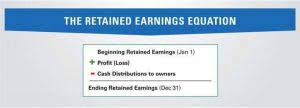Content
In the long run, if the business planned to make 0 shirts, it would choose to have 0 machines and 0 rooms, but in the short run, even if it produces no shirts it has incurred those costs. If the revenue that they are receiving is greater than their variable cost but less than their total cost, they will continue to operate will accruing an economic loss. If their total cost is less than their variable cost in the short run, the business should shut down. If revenue is greater than their total cost, this firm will have positive economic profit. Fixed costs remain the same regardless of whether goods or services are produced or not. As such, a company’s fixed costs don’t vary with the volume of production and are indirect, meaning they generally don’t apply to the production process—unlike variable costs.
Commission is classed as a variable cost because the amount you pay in commission or bonuses will vary according to sales performance. Employee earnings will increase in line with rising sales linked to commission, which increases the company’s variable costs. In order to turn a profit, companies have to cover all their expenses—whether fixed or variable. The higher a business’s fixed and variable costs, the lower its profits will be. The total costs faced by any company are composed of the combined total of its variable costs and its fixed costs. When making production decisions, managers will often consider only the variable costs related with the decision.
Only the credit card fees that are a percentage of sales (i.e., not the monthly fixed fee) should be considered variable. Production supplies, such as machinery oil, are consumed based on the amount of machinery usage, so these costs vary with production volume. Direct materials is considered the most purely variable cost of all, these are the raw materials that go into a product. Commission is also a variable cost as salespeople only get paid if they sell a product or service. Industries with high variable costs, like the service industry, that depends heavily on labor, are much more vulnerable to competition because there is less investment required to start up. Mathematically, the revenue should be equal to fixed cost plus variable cost in order to determine the precise break-even quantity.
Fixed Vs Variable Cost: Whats The Difference?
They’ll earn less in commission or wages if sales fall or they work fewer hours. Distribution and shipping are variable costs, which will increase and decrease according to sales volume and order numbers.
Clarify all fees and contract details before signing a contract or finalizing your purchase. Each individual’s unique needs should be considered when deciding on chosen products. When production rises, so do variable costs, and when production falls, so will variable costs. If the toy manufacturer were to reduce their variable costs by $7 to reach a new variable cost of $25, the contribution margin would correspondingly increase. To analyze cost behavior when costs are mixed, the cost must be split into its fixed and variable components. For example, let’s say you have total fixed costs of $50,000 per month. Being able to accurately calculate and predict your company’s fixed and variable expenses allows you to ensure the pricing point you’ve chosen is reasonable, profitable, and achievable.
- One important point to note about variable costs is that they differ between industries so it’s not at all useful to compare the variable costs of a car manufacturer and an appliance manufacturer.
- If their total cost is less than their variable cost in the short run, the business should shut down.
- Your total variable cost is equal to the variable cost per unit, multiplied by the number of units produced.
- Variable costs, like the costs of labour or raw materials, change with the level of output.
- A business incurs a shipping cost only when it sells and ships out a product.
She has consulted with many small businesses in all areas of finance. She was a university professor of finance and has written extensively in this area. Apps like PayPal typically charge businesses per transaction so customers can check out purchases through the app. The more orders you receive, the more you’ll pay to the app.
With a variable cost, the per unit cost stays the same, but the more units produced or sold, the higher the total cost. If it takes one yard of fabric at a cost of $5 per yard to make one chair, the total materials cost for one chair is $5. The total cost for 10 chairs is $50 (10 chairs × $5 per chair) and the total cost for 100 chairs is $500 (100 chairs × $5 per chair).
Company
In this case, suppose Company ABC has a fixed cost of $10,000 per month to rent the machine it uses to produce mugs. If the company does not produce any mugs for the month, it still needs to pay $10,000 to rent the machine. But even if it produces one million mugs, its fixed cost remains the same. The variable costs change from zero to $2 million in this example. A variable cost will rise and fall depending on sales and production, while fixed costs remain the same. Some common examples of variable costs include raw materials, direct labor, packaging, freight, and utilities.
- Some of the most common types of variable costs include labor, utility expenses, commissions, and raw materials.
- Variable costs are those that rise and fall with the production volume.
- Variable costs are often discussed in the context of comparing variable and fixed costs.
- A business consultant has many variable costs because she does many different types of contracts that incur their own specific expenses.
- Looking at the difference in the two-week production compared to total costs it is clear that variable costs do not work in a linear fashion due to bulk buying and other factors.
Break-even point is the point where your total business costs and your revenue are equal. That is, it’s the turning point between making a profit and making a loss.
Accounting Vs Bookkeeping
Unlike https://www.bookstime.com/s, this type of expense stays the same regardless of how much you produce or sell of your products. Fixed and variable costs make up the total cost of production.
Here is a table showing how these costs change at different volumes of production. Assume that every music box the toymaker crafts uses $20 in raw materials including string, wood, and metal plus $12 in indirect labor. Common fixed cost examples include rent, property taxes, and depreciation. Variable costs consist of the costs a business faces that change with its level of production. Variable costs vary greatly depending on the kind of business you’re in, and the product or service you produce. This can be illustrated by graphing the short run total cost curve and the short run variable cost curve. The company purchases one unit of raw material for each widget it makes.
If you sell more widgets, you’ll need to buy more widget components, and so the variable cost of raw materials increases. While fixed costs may change over time, it is not because of changes in output. Instead, alterations in contractual agreements or changes in rents can affect the rate of payment for fixed costs. The short-run total cost curve is simply the variable cost curve plus fixed costs. Looking at the difference in the two-week production compared to total costs it is clear that variable costs do not work in a linear fashion due to bulk buying and other factors. We would assume that this would be double the cost but the cost of machinery will stay the same.
Marginal Benefit Vs Marginal Cost: What’s The Difference?
Historically financial modeling has been hard, complicated, and inaccurate. The Finmark Blog is here to educate founders on key financial metrics, startup best practices, and everything else to give you the confidence to drive your business forward. Understanding which of your expenses are fixed and which are variable is important to setting pricing for your product. Variable cost structures are helpful for companies in startup mode, as they don’t run the risk of over-committing to expenses that they might not be able to meet . Fixed costs are a type of business expense that remains stable regardless of business performance.
Amortization – the allocation of the cost of an intangible asset over a period of time. Making informed decisions about business expenses can help drive profitability. The more products you create, the more employees you might need, which means a bigger payroll, too. Direct labor and overhead are often called conversion cost, while direct material and direct labor are often referred to as prime cost. Find out more today on how to increase your foreign exchange margins with Wise.
Are There Ways To Reduce Business Costs?
An auto manufacturer, for example, would have huge fixed costs due to the space, factory equipment, and inventory storage required. Fixed costs remain the same no matter how much the business produces. It is possible for these costs to reach a level at which it exceeds the profit earned from sales, increasing production may be a poor choice. The total cost can then be used to find a company’s profit which can be found by subtracting total cost from sales. This is because these costs exist in relation to the volume of production and therefore are closely related to a business’s sales success. The way a specific cost reacts to changes in activity levels is called cost behavior.
A variable cost is an ongoing business expense that is subject to change directly based on how much of product is made or sold. If the total volume of goods you produce increases, then the variable costs will increase, too.
If sales decrease, resources and labor needed decreases as well. Variable costs change based on the amount of output produced. Variable Cost is the method that assumes the main cost of products is direct labor, direct material, and variable manufacturing overhead. Other Variable Costsor “OVC” means all the variable costs detailed in Exhibit B attached hereto. “Owner” means Fertilizer Company or Refinery Company, as the context requires. Other Variable Costsor “OVC” means all the variable costs detailed in Annex B to this Exhibit B. Utility bills will often rise as a result of increased energy usage required to ramp up production.
Your average variable cost is ($600 + $450) ÷ 25, or $42 per unit. For instance, a fixed cost isn’t sunk if a piece of machinery that a company purchases can be sold to someone else for the original purchase price. Fixed costs may include lease and rental payments, insurance, and interest payments. Peggy James is a CPA with over 9 years of experience in accounting and finance, including corporate, nonprofit, and personal finance environments. She most recently worked at Duke University and is the owner of Peggy James, CPA, PLLC, serving small businesses, nonprofits, solopreneurs, freelancers, and individuals. Many companies use breakeven point to set revenue goals and prepare budgets. In addition, breakeven analysis can tell you the amount of incremental sales you need to recoup an investment, such as buying a new machine or hiring a new salesperson.
Other examples of variable costs are delivery charges, shipping charges, salaries, and wages. Performance bonuses to employees are also considered variable costs. In many instances, reducing variable costs are easier to manage without major disruptions than changing fixed costs.
If one loaf is produced, the total cost of flour will be $0.40. When 10 loaves are produced, the total cost of flour will be $4.
What Is The Difference Between Marginal And Variable Cost?
One important point to note about variable costs is that they differ between industries so it’s not at all useful to compare the variable costs of a car manufacturer and an appliance manufacturer. Breakeven analysis can be useful when investing in new equipment, launching a new product or analyzing the effects of a cost reduction plan. The breakeven point is fairly easy to calculate using information from your company’s income statement.
Variable costs, on the other hand, can be a little more unpredictable. Sometimes even your best estimates won’t quite be correct, and you’ll need to do a bit of budget reallocation. Because we haven’t considered the fixed expense of $100,000.
This means that variable costs increase as production rises and decrease as production falls. Some of the most common types of variable costs include labor, utility expenses, commissions, and raw materials. Fixed and variable costs are the two main types of expenses that companies must pay in the course of doing business. While variable costs rise and fall based on how many goods and services a business produces, fixed costs generally stay the same. Both types of expenses are important drivers of a company’s income and profitability. Variable costs are the costs incurred to create or deliver each unit of output. So, by definition, they change according to the number of goods or services a business produces.







